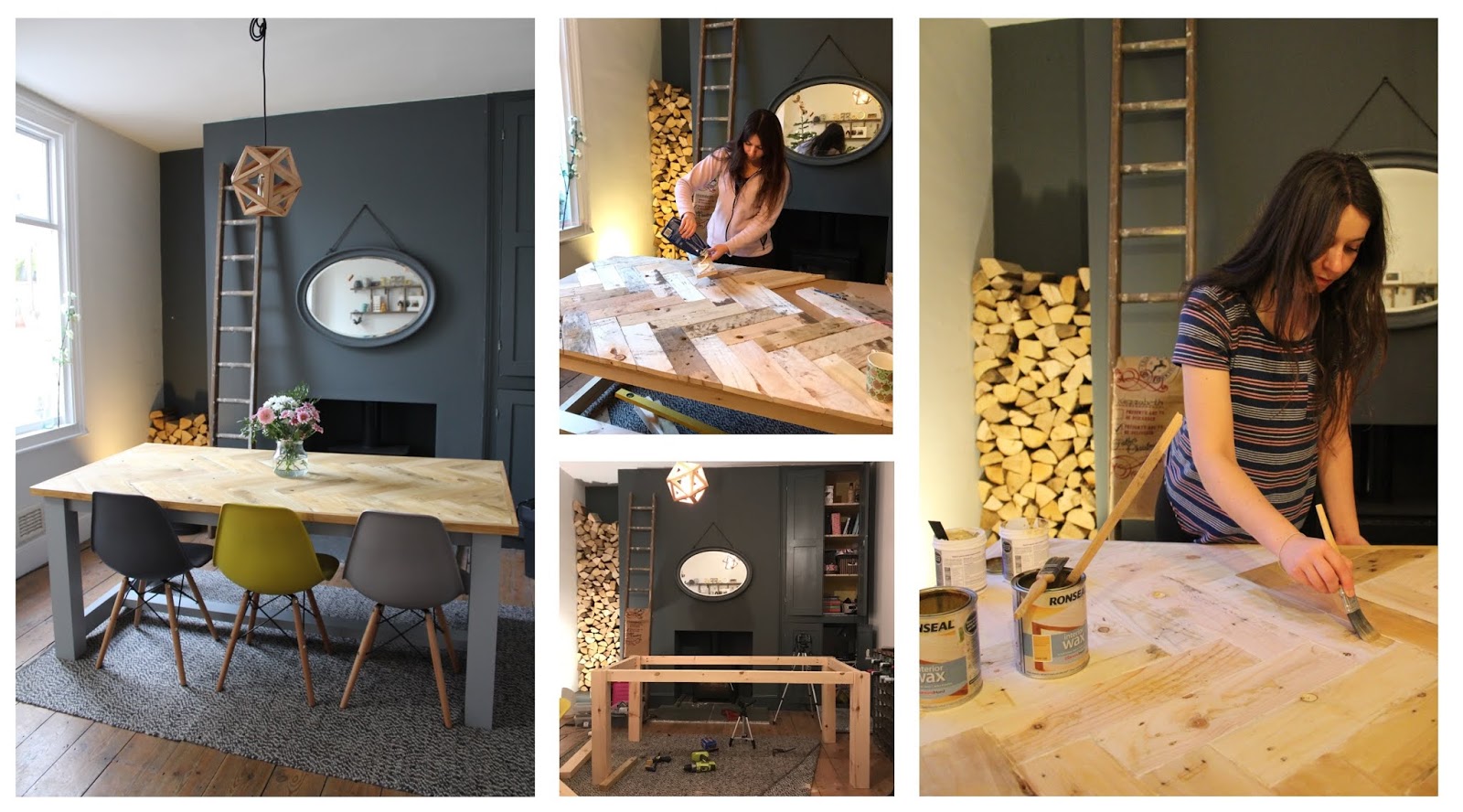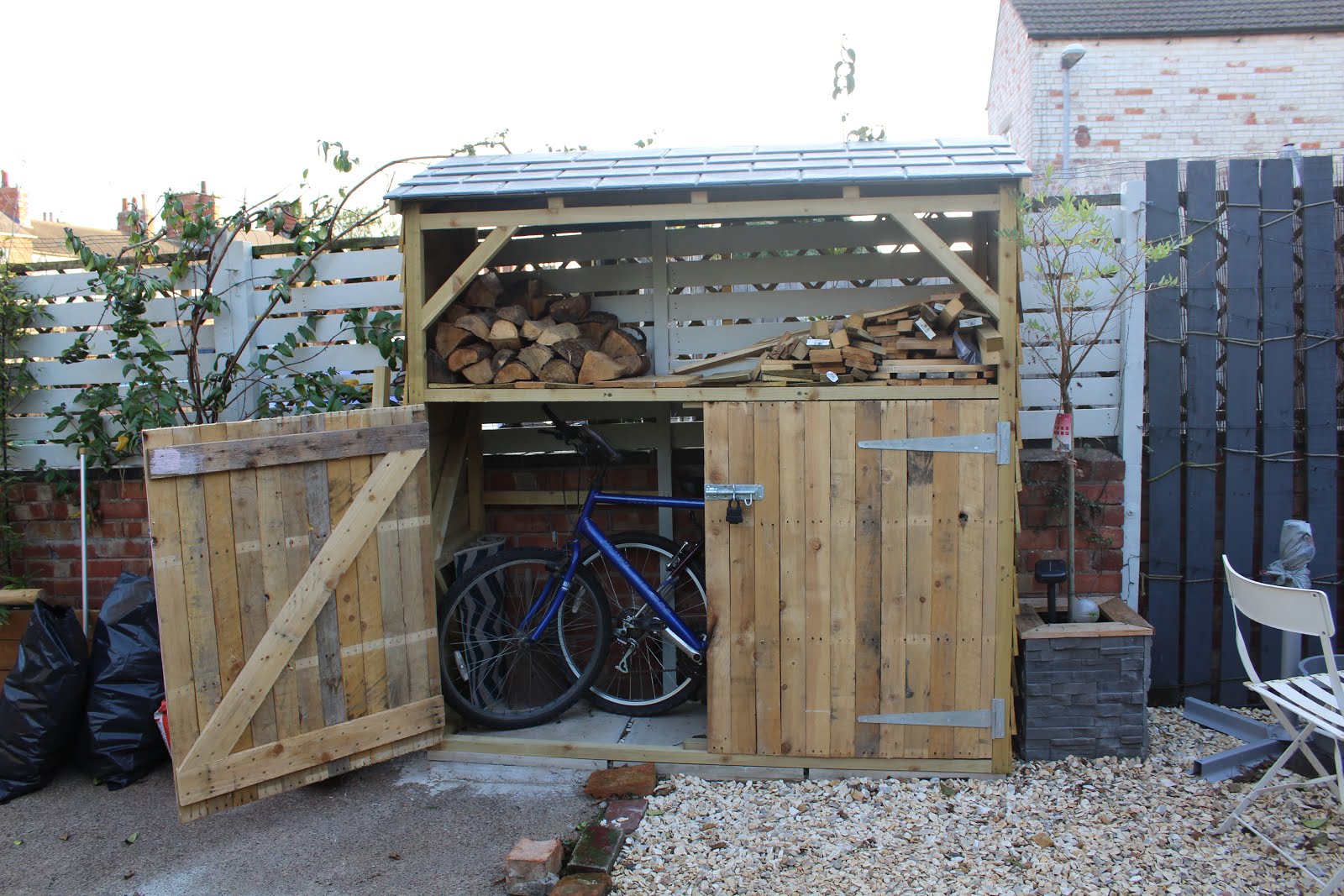There wasn’t a huge amount of renovation work in the year 2021 – partly due to having a baby and partly due to the crazy spike in the price of materials(!!). However, we did have one big (read: expensive) house update I’ve been yet to share – a new unvented cylinder!
This has been a job that we’ve needed doing since we moved in nearly 8 years ago but until recently, it had never been a priority – and I’ll explain more on that in a bit. But I know what you’re probably thinking – what was wrong with our old hot water system?
For new readers around here – this house doesn’t have central heating / a boiler. When we moved in the house had a “back boiler” which was essentially a gas fire that heated our water at the same time. It’s a very old technology from the 60s and nowadays back boilers are no longer a thing due to their inefficiency. You may remember us removing the back boiler back in 2016, however, the water tanks in the room above remained.

As you can see, there are three of them! I don’t pretend to fully understand how each tank works exactly, but only the bottom tank actually stored hot water. The others work as part of a gravity-fed system and fed the boiler. The bottom tank could also work independently from the boiler and be heated with electricity – which is how we’ve used it (and why we never removed it!).
Why We Needed To Upgrade Our Hot Water System
So, our problems with the water tank? Well, despite all three tanks taking up A LOT of space in that cupboard, we actually never had enough hot water to fill a bath! Yep, that bottom tank is actually far too small. And our flow rates? TERRIBLE. Water would literally just dribble out the tap and take about a year to fill a bath.
It just didn’t work for us, and because of that, we hardly ever heated our water. This sounds a bit mad, but actually, we have an electric shower – so that heats its own water and we use a dishwasher for most washing-up, so on the whole, we never found ourselves *needing* hot water. We’d only heat water on the rare occasion one of us wanted a bath. And this way of living worked for us for years. Not having hot water on demand has never been something we’ve complained about or felt we desperately needed. Until we had a baby, that is.
At first, we filled up the baby bath using the electric shower. I mean, the baby bath was so small, it was much cheaper to do this than heat a whole tank anyway – but we knew he would outgrow his small baby bath and we’d eventually need that hot water on demand. And we needed it to not take a year to come out of the tap.
The water tanks also reside in the spare room which was soon-to-be Dylan’s room – so we wanted that sorting before he moved in there too, so we wouldn’t be causing havoc in his room at a later date.
So back in June 2021 we finally had the tanks replaced for a newer system – a single unvented cylinder. I thought I’d write this post to share a bit of detail about the installation process and a little “review” if you like, of how we’re getting on with our new hot water system.

Finding Tradespeople
So to begin with, I should certainly say that we hired a plumber for this job. Work on unvented cylinders should only be carried out by qualified plumbers. As unvented cylinders are pressurized, if there is an incorrect build-up of pressure, this could be very dangerous. In very rare cases, could even lead to an explosion. We take zero risks with DIY when it comes to stuff like this – it really is worth every penny to pay a professional.
We typically use Rated People or MyBuilder to find tradespeople and always aim for 3 quotes to compare. We then weigh up reviews against price and how we felt about the person themselves. On this occasion, we had 2 quotes which were exactly the same and 1 which was slightly cheaper. But on the whole, they were pretty similar – which was a good indication no one was trying to rip us off!
Removing the Old Cupboard Housing
Before they arrived, we had to remove the cupboard prior to any work being done. Our new tank was to be slightly wider than the old ones and unfortunately, it wouldn’t have fit inside the existing housing. We could have opted for a “skinny” cylinder, but it would have been much taller and therefore would actually take up more room in the cupboard. We decided re-building was the best option for us as the old cupboard wasn’t in the best condition anyway – but it was definitely an additional cost to consider.


Installation Day
Installing a new unvented cylinder took one full day between two tradesmen. They removed the old tanks, fit a new overflow pipe on the outside of the house, re-routed some plumbing so the pipework is hidden under the floorboards and they also did some electrical work (as our tank will still be run on electricity!). It was quite a noisy day and poor Dylan couldn’t get any sleep! But they were very thorough and did a lovely neat job.



Before they turned the water back on, we were warned leaks elsewhere in the house could be possible as our hot water pipes have never been subjected to high pressure before. Essentially any poor joins could suddenly crack. And they did. Not soon after the water went on, a pipe in the bathroom started leaking. Everything was turned back off and the plumber lifted the floorboards to fix the leak. At this point, I was VERY glad we never tiled the bathroom floor!!

Several Months Later – How We’re Getting On
So it’s been a fair few months living with our new hot water tank and I’m here to write that our new cylinder has been brilliant and MUCH NEEDED. I mean, hot water no longer dribbles out the tap and the flow rates are just as good as our cold water! And because our new tank has two heating elements (one at the top and one at the bottom) it even heats up pretty quickly too. Our new tank is almost double the size so we have PLENTY of hot water now – possibly too much, but we thought bigger would at least be future-proofing.
Because the new tank is far more insulated than the old one, it even stays hotter for much longer too! Obviously, it depends on how much hot water we use, but with little use, we still have hot water on day 3 after heating, which is mad when our old tank would lose all its heat within 12 hours.
All in all, you could say we’re pretty happy we made the switch! Eventually, we’ll probably add some sort of smart switch so we can program and control the cylinder wirelessly. But at the moment, we just switch it on/off an hour or so before we want hot water. Again, this works for us as we don’t need a lot of hot water, but there’s certainly the potential to add something like that if constantly turning on/off wouldn’t suit you.
Running Costs
Unfortunately, I don’t have a direct comparison for old vs. new in terms of running costs – and with the crazy rising cost of energy over the last 12 months, it would inaccurate to compare anyway. But I thought I’d share the current operating costs (February 2022) in case this is helpful for anyone. By the way, we have an “Ideal Heating – Instinct” Unvented Cylinder – 200L tank.
From a completely cold tank to a fully heated tank – it takes 2 hours.
Each heating element costs 58p/hr to run (we have two heating elements), giving a total cost of £1.19/hr. As it takes 2 hours to fully heat from cold – this gives us the total cost of around £2.38
Of course, this figure isn’t “set”, as our tank isn’t always cold when we re-heat and therefore doesn’t take a full 2 hours to heat. We also don’t always fully heat the tank, instead, opting to switch the tank on for just an hour or so, which means the tank may not be fully heated, but definitely hot enough for our needs that day or two. So these figures above aren’t exactly what we spend day-to-day, but hopefully, this gives you some idea of running costs. As you can see – it isn’t cheap with the current rising energy rates though.

Total Installation Cost for a 200L Unvented Cylinder (including tank and materials) – £1050 (June 2021)
I know many people will want to know why we STILL haven’t invested in a boiler, but ultimately it’s all down to cost for us. Our new unvented cylinder was £1050 to install, a boiler (and radiators, all new pipework, etc) would be upwards of £4000+ which we simply don’t have. In the long run, I’m sure gas WOULD save us money on running costs, but that still doesn’t mean we can drop £4k in one go or afford a loan. So yes, or house may be unconventional, but it works for us right now.
We’ve already started work on building a new cupboard to house the unvented cylinder, so I’ll share more on that soon, but I hope some of this was helpful if you’re in a similar situation and looking to install an unvented cylinder.
Don’t forget you can also follow me on Instagram for real-time updates on our home reno too!












No Comments